Hong Kong’s Mai Po Marshes Nature Reserve is like a natural theatre, a place where you can enjoy impressive wildlife spectacles. Visit during the hot, steamy days of summer, and you will find it quiet: the main players, migratory birds, are mainly at breeding grounds far to the north. But Mai Po will soon be busy again, as shorebirds begin passing through, on journeys that may take them from the high Arctic to beaches around Australia.
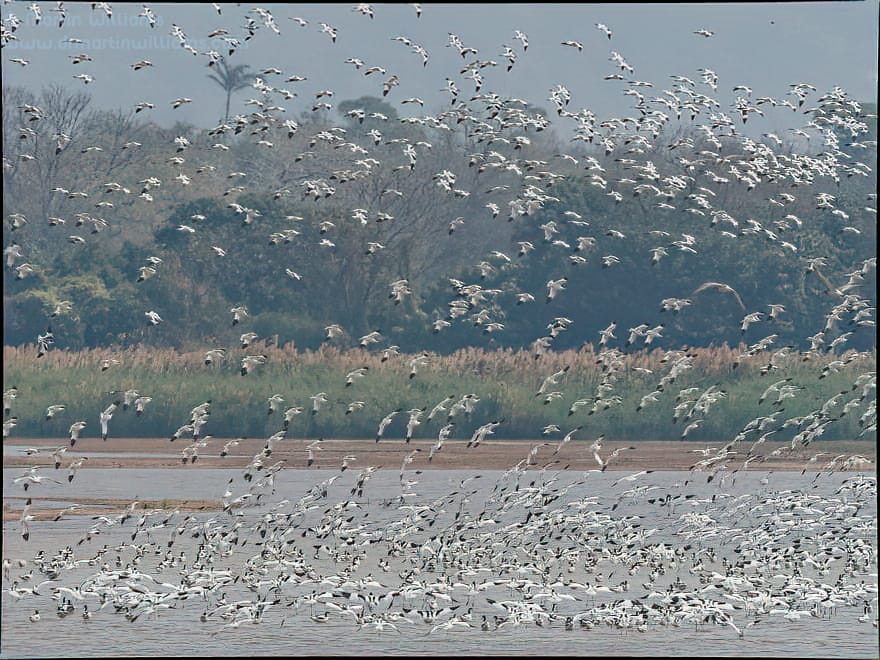
Mai Po is part of the Deep Bay wetland, a complex of fishponds, shrimp ponds and reedbeds centred on a mangrove-fringed estuary, which is fed by small rivers from Hong Kong and neighbouring Shenzhen in mainland China, and empties into the expansive mouth of the Pearl River. Though crabs and other invertebrates abound, and there are snakes and other reptiles, and mammals including mongooses, birds are the most conspicuous wildlife.
Egrets – white, elegant herons – are found year-round. Tens of thousands of birds rest and refuel here on migration; around 50,000 waterbirds spend winter in the bay. The substantial bird numbers, including globally threatened species, help make Deep Bay one of China’s 30 sites that are officially designated as Wetlands of International Importance.
Mai Po in winter
Many shorebirds have already reached Australia by the time Mai Po’s winter visitors are surging in, spurred southwards by chill winds that sweep through China during October and November. From late November, the reserve is bustling, with birds almost wherever you look – on ponds, in trees, flying over. Even before you enter the reserve at this time, you’re almost certain to see cormorants, big black birds that fly with necks stretched out straight.
A hundred metres or so along the footpath into Mai Po, cormorants may festoon a line of trees between two reedy ponds. With maybe 20 or more in each tree, hundreds gather here to rest, and stretch their wings to dry feathers that are only partly waterproof. Successive flocks arrive from out in the bay, where they have been swimming in flotillas, diving to catch fish.
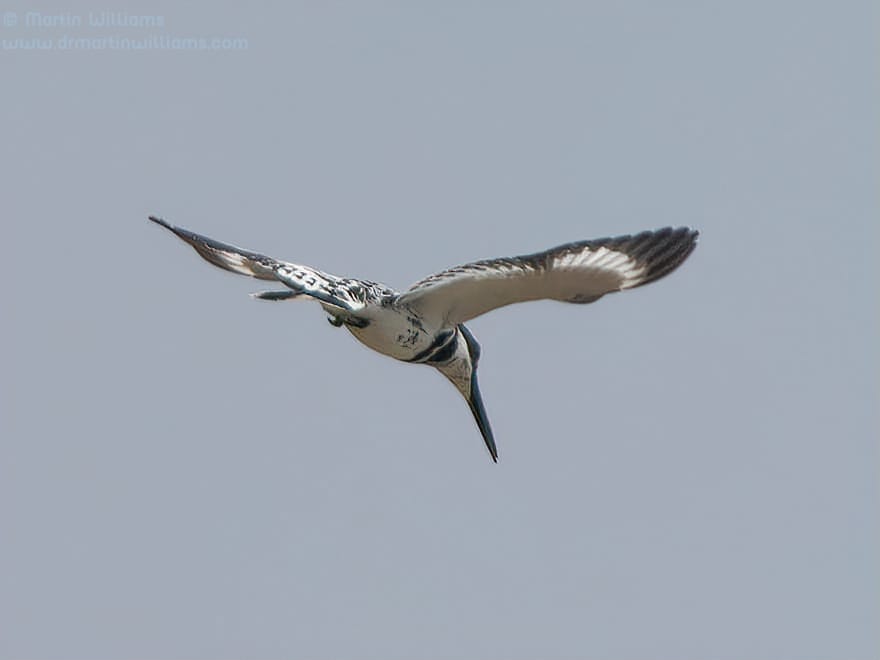
There are egrets, too, perched in trees or standing in the shallows, sharp beaks poised in readiness to lunge after fish or other aquatic creatures. Common kingfishers flash brilliant blue as they dart low over the water, then perch on reeds and wooden posts, also on the lookout for fish. Three other kingfisher species are larger, including the pied kingfisher, which prefers to hover a few metres over the water, darting down if it sees prey, moving to another pond if not.
The World Wide Fund for Nature Hong Kong – which manages Mai Po – has an education centre within the reserve, and next to this are ponds that were created for captive waterfowl, to ensure all visitors could see at least some birds up close. Wild, winter ducks have taken a liking to these ponds, partly because they receive free handouts of grain, and over the years have become well used to visitors watching them from a few tens of metres away. Most are wigeon, with rusty red necks and heads topped by yellow foreheads. [Tho the captive birds have evidently died off, and grain feeding has halted, so these ponds tend to be quieter nowadays – ie around 2023].
From here, you have to walk for maybe 20 minutes or more to reach my favourite part of Mai Po in winter. This is Pond 20, a pond the size of a soccer pitch, with grassy banks and scattered trees along one edge. Ducks congregate here; they’re warier than those on the education centre ponds. Here at Mai Po, they’re safe from humans. But I once watched as a young Bonelli’s eagle soared over this pond, apparently lazy, just riding air currents, then swooping and curving down to the wet grass and landing as ducks took off around it. Looking closely, I noticed the eagle was holding a duck in a talon; it carried this to a nearby earth bank, and ripped into its meal. [Also 2023 update: Pond 20’s best days for attracting ducks maybe behind it, but still a pleasant area, and good to walk further south, where some ponds have been landscaped to become more attractive to birds.]
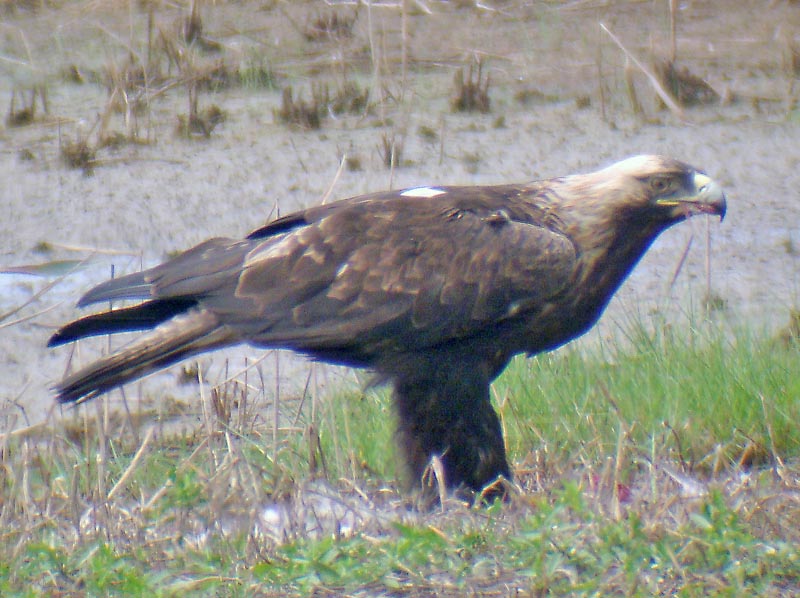
While such dramas are unusual during my visits, I find this is a good area for seeing eagles. Especially imperial eagle, which is among the globally threatened species found at Mai Po each year. Often, one or two imperial eagles are perched atop a small tree – regal birds with golden-yellow hindnecks crowning their dark plumage, and powerful bills. When one takes flight, the ducks leap into the air, and swirl in flocks of hundreds before settling again, and watching. Without the benefit of surprise, the eagles shouldn’t catch healthy ducks – if they stay alert.
Another pond, nearer the education centre, is a prime location for Hong Kong’s star bird: black-faced spoonbill. Closely related to herons and egrets, but with their flattened bills widening at the tip like long spoons, these spoonbills are unique to east Asia. It was only in the late 1980s that conservationists realised this species was in trouble, when a Hong Kong birdwatcher gathered records, and tallied a known world population of, at best, 288. Though numbers have since risen to around 1500 [over 6000 in early 2022], this is still a scarce species, dependent on wetlands like Deep Bay for its survival.
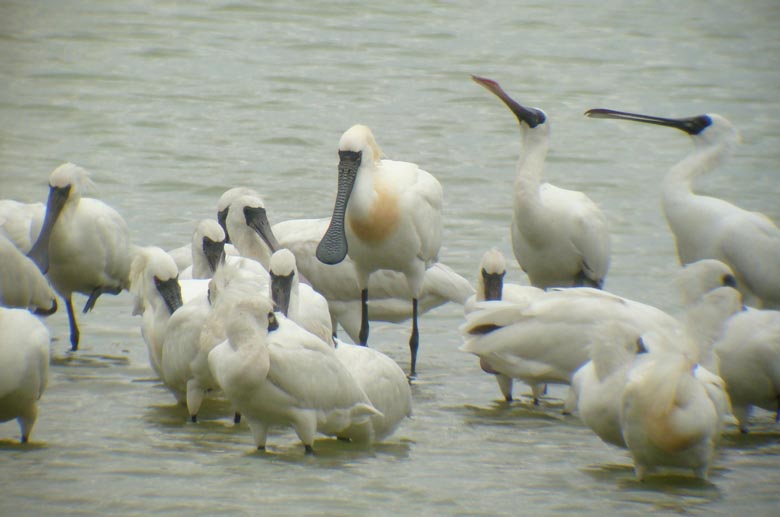
Deep Bay is one of two key winter and migration sites for black-faced spoonbills: around a fifth of the world population occur each year. They scatter throughout much of the wetland to hunt fish and shrimps in shallow water. From mid-morning to late afternoon, they often gather at Mai Po ponds to rest, heads and bills tucked into wing feathers.
Trails – and the Boardwalk
Mai Po was originally a collection of shrimp ponds that were dug out from the mangroves. Petitioned by birdwatchers in the 1970s, the Hong Kong government declared Mai Po a site of special scientific interest, and in 1985 the Mai Po Marshes Nature Reserve was established, and managed by WWF Hong Kong.
WWF has landscaped several of the ponds, and built a system of trails, viewing facilities, the education centre and a visitor centre. Around 50,000 people now visit each year. But with most arriving in groups, which tour in unison, the reserve seems remarkably free of people compared to some wetland reserves elsewhere. This might seem good for wildlife, yet more visitors needn’t cause significant disturbance, and would bring more money, more support for protecting Mai Po and Deep Bay.

The most interesting path at Mai Po is the Boardwalk, a wooden walkway out through the mangroves. This initially runs along a creek, where the planks float atop a series of drums. Follow this, and you should see fiddler crabs beside the creek, the males with one outsize claw for displaying and fighting, the other claw tiny, for busily picking up morsels of food. The boardwalk then tunnels through dense mangroves, with their system of aerial roots, to arrive at hides (blinds) where the trees give way to open mudflats. This is the estuary, the heart of Deep Bay. And if you have checked the tide forecast, it could be showtime.
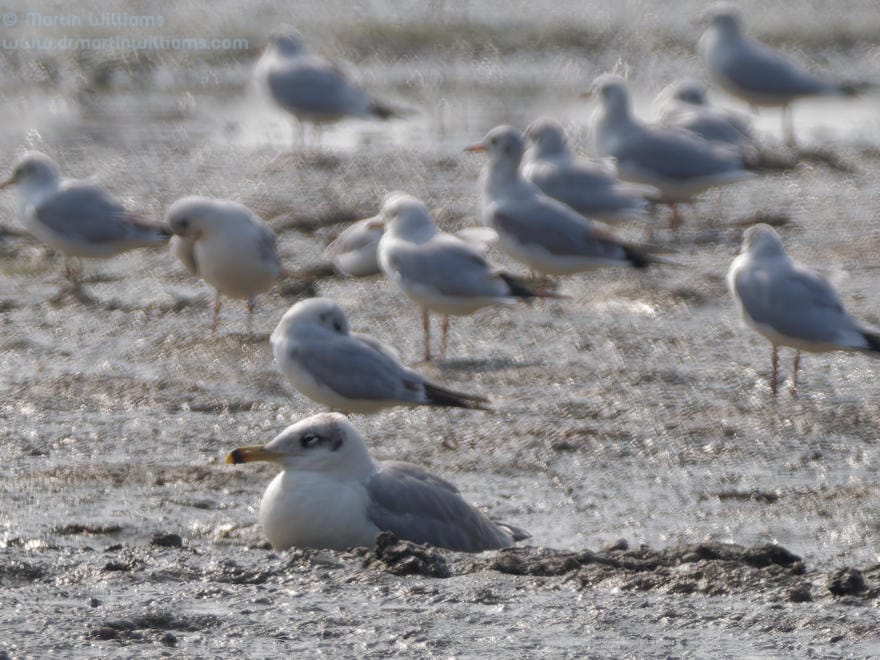
Showtime in Deep Bay means the tideline is close, and the thousands of birds that feed here are packed into the narrow band of remaining open mud. A decade ago, this was often superb in winter, but a combination of quirky tides and rising mud levels have reduced the winter shows; however, April remains good.
Showtime at Mai Po in spring
In April, the spring migration is in fully swing. Most winter birds are gone, and the shorebirds are back from Australia and elsewhere. Thousands assemble along the tideline. There are sandpipers and plovers, resplendent in spring plumage that often includes reds and browns – good camouflage on Arctic tundra. There are curlews, the largest of our shorebirds, their bills as long as the tiniest of them, stints. Avid birdwatchers scrutinise the stints, looking for spoon-billed sandpiper – the only shorebird with a flattened tip to its bill, and one of the rarest birds in Asia.
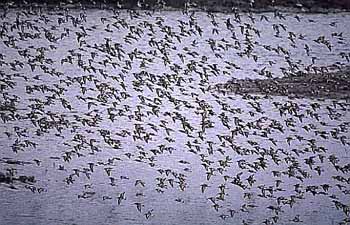
The shorebirds take flight en masse, then twist and turn over the mud in tight flocks, calling loudly. Watch and you’ll soon find why: there’s a peregrine falcon dashing in amongst them, turning fast as it targets a sandpiper, misses, turns again, then eases its pace, and disappears behind a belt of mangroves. The shorebirds soon land, still piping in alarm.
Egrets are less alarmed by the peregrine, too large to be on its usual menu. They stalk the mud, seeking creatures like mudskippers. Primordial fish that can breathe air through their wet skin, and have protruding eyes like frogs, mudskippers slither around, the males waving fins on their backs. The higher mudflats can seem alive with mudskippers – yet if an egret flies in to land, they promptly vanish into their burrows.
Across the bay is Shenzhen. And though there is a wetland reserve in Shenzhen, it’s small, and north Deep Bay appears a continuous band of development. Construction work is ongoing, and together with flood control schemes has perhaps caused the alarming rise in the mudflats – the estuary, the core of Deep Bay, is effectively shrinking. Pollution is another problem, partly controlled in Hong Kong, but severe in Shenzhen.
Successive waves of shorebirds arrive in spring, spending a few days in Deep Bay before they have the energy and fat reserves to continue their marathon journeys. If Mai Po and Deep Bay can remain well protected, with the mudflats and pollution stabilised, these and many tens of thousands of other waterbirds will still have this wonderful wetland to rely on as a migration pitstop, and winter home. But sadly, Deep Bay’s future is by no means assured. See it while you can.

 At Mai Po Marshes Nature Reserve you can enjoy impressive wildlife spectacles.
At Mai Po Marshes Nature Reserve you can enjoy impressive wildlife spectacles.







































































